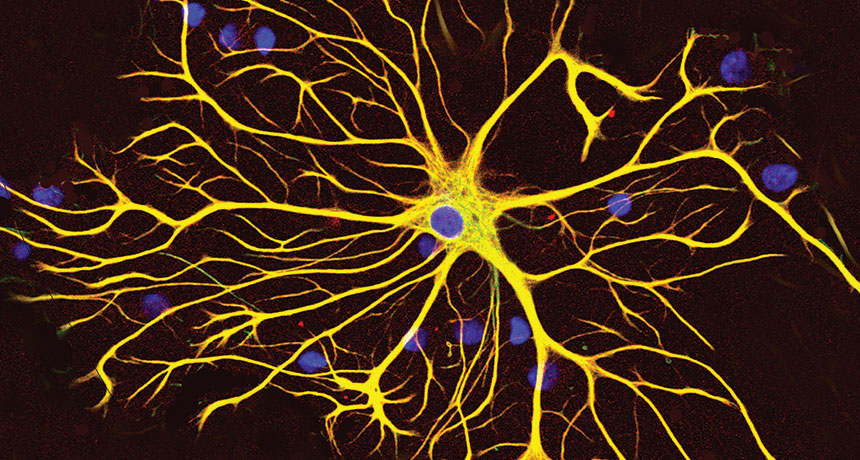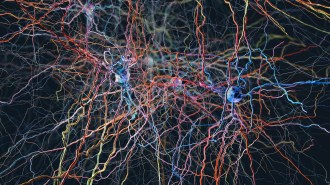Astrocytes help speed up brain’s messages
Type of glial cell does more than feed and care for nerve cells

HELPING HAND Nearby astrocytes help move electrical signals along nerve cells, a new study reveals.
GerryShaw/Wikimedia Commons (CC BY-SA 3.0)






